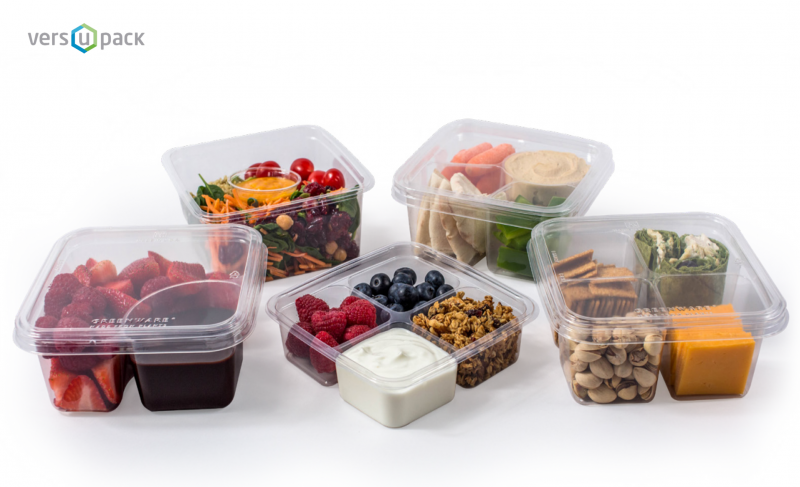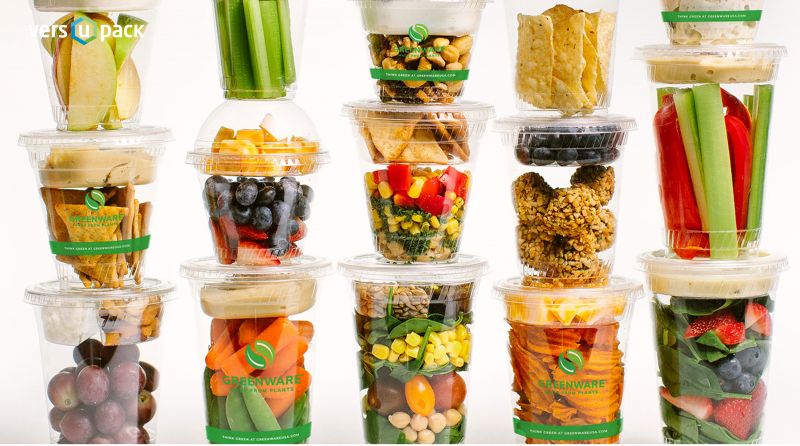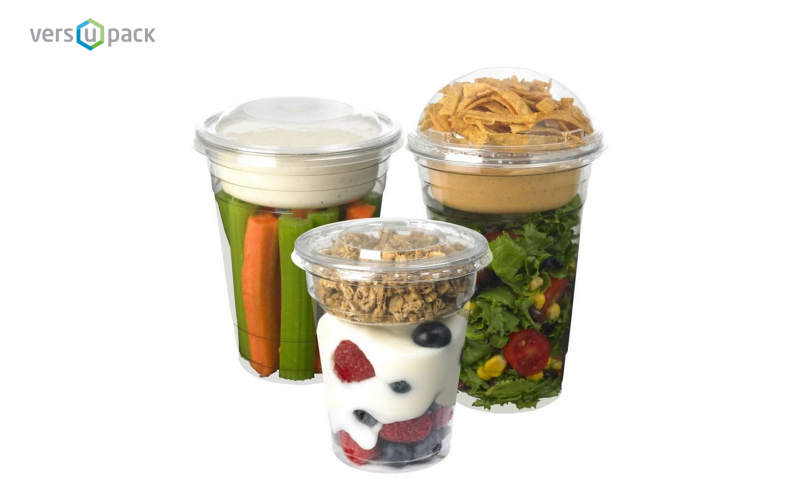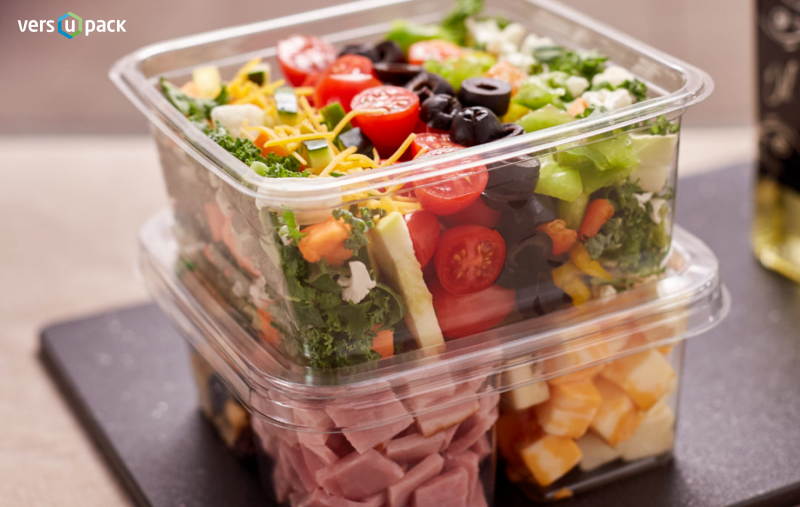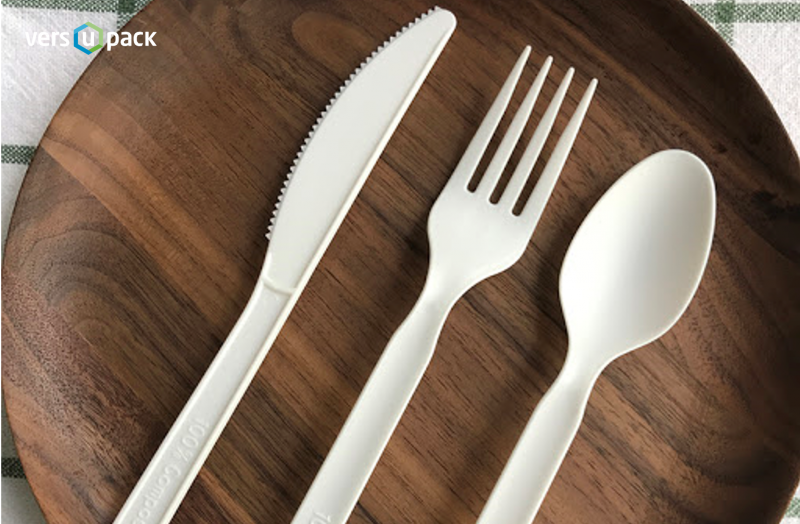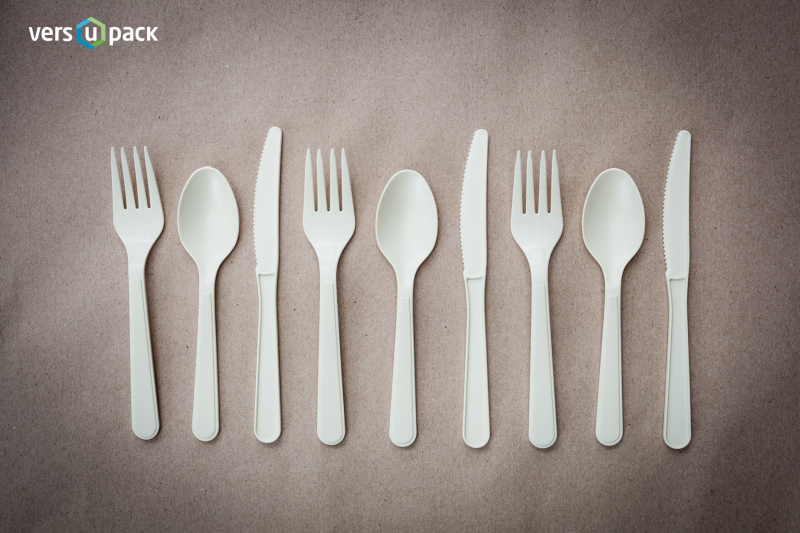Komposterbar plastbakker til kolde fødevarer
May 2021
Plastic pollution is without a doubt one of the biggest threats posed to our environment. Petroleum-based plastics are ubiquitous in everyday life. Our unchecked consumption inevitably leads to large amounts of plastic ending up in landfills, oceans, air, and even human blood. It is estimated that 12 billion tonnes of plastic will pollute Earth’s natural areas by 2050 (1). The statistics are certainly concerning and a lot of countries and intergovernmental organisations are beginning to take steps towards a more sustainable future. Tackling this global issue comprises of four main courses of actions: reducing, reusing, recycling and replacing.
Yet, producing plant-based plastic helps reduce carbon footprint as its manufacture produces less carbon dioxide and other greenhouse gases. In a 2017 study (2), it was estimated that switching to bio-based plastic from petroleum-based plastic would curtail US greenhouse gas emission by 25%. Using PLA allows to lessen our reliance on petroleum-based plastics, which in turn lowers the demand for them. Moreover, the amount of carbon dioxide emitted during combustion of PLA is notably lower, than in other plastics, such as PS, PET, PP and PE.

• They are crystal clear which ensures superior product visibility;
• Leak-resistant lids are easy to put on and remove;
• Smooth rims make drinking a safe and comfortable experience;
• Safe material, which doesn’t contain toxic components, such as BPA or PFAS.
All in all, while plant-based plastic might not currently be a comprehensive answer to plastic pollution, it certainly looks promising. Hopefully, with advancements in science and technology, and further research into plastic alternatives, we might soon be able to discover a truly environmentally-friendly solution to the plastic problem.
We offer an assortment of packaging products for foodservice industry and disposable cutlery made from PLA and CPLA bioplastic. Shop our sustainable range of disposable cups, compostable food containers for Take away, clear salad bowls To Go, clear Deli containers, portion cups and lids for it, hot and cold drink paper cups with PLA coating, biodegradable Takeaway paper boxes with PLA coating, single-use cutlery.
(1) https://www.bbvaopenmind.com/en/science/environment/microplastics-the-most-ubiquitous-pollution-of-land-and-sea/
(2) https://iopscience.iop.org/article/10.1088/1748-9326/aa60a7
(3) https://www.unitika.co.jp/terramac/e/how/
Food packaging that complies with the 4R's of sustainability
What is the 4Rs of sustainability in foodservice industry? Reducing plastic waste means only buying what you need and opting for products with less packaging. Reusing means choosing items that can be used multiple times, such as reusable water bottles, food containers, and canvas shopping bags. Recycling means putting products to a new use and repurposing them. Replacing means finding and utilising alternative materials where possible, in order to substitute plastic. Plant-based plastics are considered a possible solution to the plastic dilemma.Plant based material for food service industry: What is PLA?
PLA (or Poly Lactic Acid) is a type of thermoplastic, which is derived from sugarcane or cornstarch. Wallace Carothers, who was looking to produce an eco-friendly plastic for world’s largest chemical manufacturer DuPont, first invented PLA in 1920. However, the production was rather costly, so it was halted until further notice. Decades later, Patrick and Sally Gruber managed to produce PLA from corn using a regular household stove. This discovery significantly reduced the costs of PLA manufacturing. The process of PLA production looks like this: corn kernels are soaked in a mixture of hot water and sulfur dioxide, which allows them to break down into fiber, protein and starch. Then, corn oil is separated from the starch and the kernels are ground. Later, a long-chain polymer is formed using citric acids. This polymer is a building block for plant-based plastic. Nowadays, PLA is the cheapest bioplastic to produce and it’s widely used in 3D printing, disposable food packaging, plastic films, bottles and biodegradable medical implants. CPLA (crystallised polylactic acid) is a heat-resistant type of PLA, which is used to produce single-use disposable cutlery. It can withstand temperatures up to +90˚C, while regular PLA shouldn’t be heated over +40˚C.PLA packaging: what are the advantages?
Possibly the biggest benefit of using PLA disposable packaging is that it is compostable. It can fully biodegrade into water, carbon dioxide and biomass within 3 months in a commercial composting facility under specific circumstances. High temperatures of at least 55-70˚C and humidity are necessary for PLA to biodegrade. Given that industrial composting facilities are not readily available in all municipalities, we encourage you to make sure that you separate it from other plastics in your recycling bin.Yet, producing plant-based plastic helps reduce carbon footprint as its manufacture produces less carbon dioxide and other greenhouse gases. In a 2017 study (2), it was estimated that switching to bio-based plastic from petroleum-based plastic would curtail US greenhouse gas emission by 25%. Using PLA allows to lessen our reliance on petroleum-based plastics, which in turn lowers the demand for them. Moreover, the amount of carbon dioxide emitted during combustion of PLA is notably lower, than in other plastics, such as PS, PET, PP and PE.
Benefits of PLA plastic To Go or Take Away containers:
• They are crystal clear which ensures superior product visibility;• Leak-resistant lids are easy to put on and remove;
• Smooth rims make drinking a safe and comfortable experience;
• Safe material, which doesn’t contain toxic components, such as BPA or PFAS.
All in all, while plant-based plastic might not currently be a comprehensive answer to plastic pollution, it certainly looks promising. Hopefully, with advancements in science and technology, and further research into plastic alternatives, we might soon be able to discover a truly environmentally-friendly solution to the plastic problem.
We offer an assortment of packaging products for foodservice industry and disposable cutlery made from PLA and CPLA bioplastic. Shop our sustainable range of disposable cups, compostable food containers for Take away, clear salad bowls To Go, clear Deli containers, portion cups and lids for it, hot and cold drink paper cups with PLA coating, biodegradable Takeaway paper boxes with PLA coating, single-use cutlery.
(1) https://www.bbvaopenmind.com/en/science/environment/microplastics-the-most-ubiquitous-pollution-of-land-and-sea/
(2) https://iopscience.iop.org/article/10.1088/1748-9326/aa60a7
(3) https://www.unitika.co.jp/terramac/e/how/
